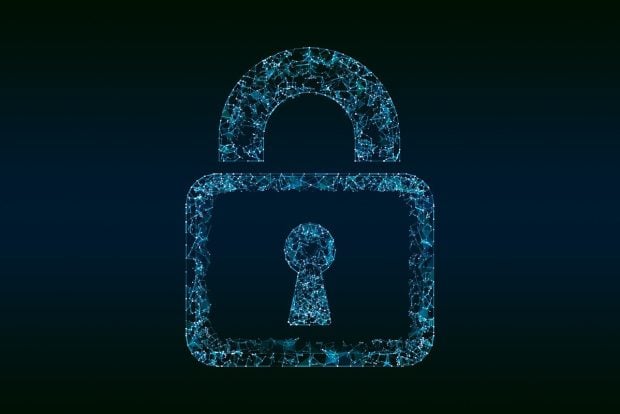Blockchain: alchemy or wizardry?

Like the cryptocurrencies that gave birth to them, blockchain technologies attract excitement and scepticism in equal measure. Don’t believe the hype, says James Johns – but in time, blockchain could provide valuable tools for public servants
In our technologically advanced age, it’s easy to scoff at the early alchemists. Their combination of crude experimentation with elements of astrology, spiritualism and art, in pursuit of goals which included finding the ‘elixir of life’ and the transmutation of base metals into gold, have left them with a reputation as fantasists and charlatans. But whilst alchemy did not survive into the Age of Reason, we have its early practitioners to thank for laying many of the foundations of modern science.
Indian alchemists were producing high-strength carbon steel as early as 300-200 BC. The eighth-century Persian alchemist Jabir ibn Hayyan was the first person to describe sulphuric acid: his writing describes the importance of experimentation, and illustrates the use of more than 20 pieces of scientific equipment that could still be found in a contemporary laboratory. The 12th century German monk Albertus Magnus is usually credited with the discovery of arsenic, and experimented with photo-sensitive chemicals including silver nitrate. Both Isaac Newton and Robert Boyle (the ‘father of modern chemistry’), whose contributions to science are unimpeachable, were enthusiastic alchemists and devoted significant effort to experiments in transmutation. Around one 10th of the 10 million words in Newton’s papers deal with alchemy.
So it should perhaps not be a surprise to us that useful technologies frequently arise from otherwise questionable experiments conducted in the pursuit of wealth. The development of blockchain as a by-product of the launch of the Bitcoin cryptocurrency looks like the latest example.
Emerging from ambiguity
Bitcoin was launched in 2008 by ‘Satoshi Nakamoto’. With the exception of this name, details of the identity of Bitcoin’s creator are otherwise unknown; various individuals have claimed to be Nakamoto, and it has been suggested that the pseudonym represents a collective rather than an individual. This vagueness has contributed to the reasons why, like alchemic transmutation, cryptocurrencies have come to be viewed with suspicion. Without the backing of a nation state and with no obviously convertible token (as one would have with a real coin), their initial appeal was limited to the most technically adept, the bravest speculators, or those with malign intent; Bitcoin was for a time, the currency of choice on the dark web.
Until recently, the value of Bitcoin and similar alt-currencies seemed to be booming: one feature of Bitcoin is that there is a defined maximum number which can be issued, creating an artificial scarcity. But at the time of writing, Bitcoin is trading at about a third of 2017 peak value of US$19,000. And within the last few weeks, we have seen a number of institutions take steps which have further eroded the credibility of Bitcoin and its ilk.
Google and other major social networking services have said they will stop carrying adverts for cryptocurrencies. Bill Gates has called Bitcoin “one of the crazier, speculative things” that he has seen. And billionaire investor Warren Buffet has described Bitcoin as “rat poison squared”. All this has served to suggest that the technology is shaping up to be, at best, an investment bubble.
Chain of command
It is not the purpose of this article to go into great detail about cryptocurrencies, but it is worth spending a little time explaining how they function – for their characteristics and operation point to potential applications in the public sector.
Unlike a traditional, nation-backed currency, cryptocurrencies operate entirely on a peer-to-peer basis. So the systems that underpin them must be designed to replicate the trust that normally exists in a currency by reference to a central authority such as a government or central bank. They achieve this by using cryptography for the assertion of ownership or to create transactions recording a change in ownership, storing this information in an electronic ledger which is distributed across multiple computing devices.
Various pre-blockchain attempts to create digital currencies, even with the backing of a central authority, have encountered what is known as the ‘double spending’ problem. This occurs when illegal copies are made of the digital token (a computer file) representing a unit of currency, each of which can then be exchanged for something of value. The double-spending problem can devalue digital currencies, and damages trust in cashless systems. The inventors of Bitcoin came up with a novel way of solving this problem without requiring a centralised computer server to verify each unit or transaction: the blockchain.
Trust through transparency
A change in the ownership of a unit of Bitcoin is written as a transaction record into a block of data and replicated across all the devices participating in the ledger. Each block may contain multiple transaction records. Crucially, it will also contain a record which contains a ‘hash’ key from the previous block in the chain. This is a cryptographically-derived value, produced using all of the data in the previous block of transactions as input to a one-way function. In other words, whilst the hash value is derived from the data, one cannot reverse the process to derive the constituent data from the hash value.
Because each block contains a hash of the previous block, it in effect contains a representation of all the previous transactions in the chain. Once it has been written, changes cannot be made to the data in a block (for example, to amend the details of a transaction recording a change in ownership) without the need to ripple the resulting change in the hash values through all the subsequent blocks, which requires the approval of a majority of the other participants in the chain.
So even if the participating parties do not trust each other before or after the transaction, a blockchain is structured in a way that creates a representation of the legal obligations of ‘offer and acceptance’: a recognition that the parties were of the same mind at the point of contract. This inviolability and the need for widespread approval regarding changes are very useful features of blockchain. However, its structure also offers other advantages over traditional, centralised data repositories. It has no single point of failure, making it potentially very robust, and no centralised point of vulnerability which could be exploited in a cyber-attack.
Coining it
Like any technology, though, blockchain is not a panacea. Compared to a conventional centrally-stored database, it is relatively slow to update or add records, because transactions require changes to be replicated across the distributed system holding the ledger.
The maintenance of a blockchain can also require huge amounts of electricity – in the case of Bitcoin, this is in part a feature of the system’s design. The process of validating new blocks in the chain depends on the willingness of speculators to devote significant computing resources to competing to be the first to solve a complex algorithmic puzzle, in return for which they are granted a number of new Bitcoin – the process of ‘mining’. Forbes magazine has reported that the electricity consumption of the blockchain supporting Bitcoin is roughly equivalent to that of the nation of Switzerland.
It’s important therefore that those responsible for public services do not fall for the hype when identifying potential use cases for the technology. Traditional, centralised databases will continue to be appropriate for a great many solutions, particularly those which require immediacy of response or where the trust between the participants in a transaction is established through other means.
Nevertheless, because it is an effective way of both facilitating exchange of value between parties in the absence of trust, and due to its resistance to corruption, blockchain does have the potential to act as a foundational technology in a great many different spheres.
In service of public services
For example, a blockchain could be used to record the ownership not only of cryptocurrencies, but of any type of asset – such as property. The governments of Sweden and the Republic of Georgia have both piloted blockchain as the basis of a new type of land register. Similarly, blockchains could be used to maintain data about the provenance of items, such as diamonds or elements of a food chain, which might otherwise be susceptible to fraud or deception. DeBeers has piloted its use to track 100 gems from mine to retailer, proving the technology’s value in helping to contain the threat of forgeries or conflict minerals, which might be used to finance violence. In China, food safety scares are commonplace – not without reason, given the series of incidents such as the 2008 contamination of baby milk with melamine. To tackle this problem, Chinese producers are experimenting with the use of blockchain – for example in the beef industry – to give consumers access to data which allows them to trace ingredients from farm to plate.
The wholesale digital transformation of public services is not something that will be achieved overnight, and many governments have yet to scratch the surface of what is possible even with the sorts of internet technologies which have been commonplace for nearly two decades. Nevertheless, blockchain does provide an additional weapon in the armoury of governments keen to embrace new technologies.
In 2016, the British Government asked its then chief scientific advisor, Sir Mark Walport, to produce a report into the potential of distributed ledger technology in public services. His report concluded that it has “the potential to redefine the relationship between government and the citizen in terms of data sharing, transparency and trust”.
The future of Bitcoin and other cryptocurrencies must still be regarded as questionable, not least because they lack the same sort of support that governments provide to real currencies. But like the incidental discoveries of alchemists in centuries gone by, it is their gift of blockchain to society which seems likely to produce the furthest-reaching benefits.






















Good writing—this article communicates the fundamentals of blockchain technology.
Thank you. Very clear explanation! I finally understand how blockchain technology works.